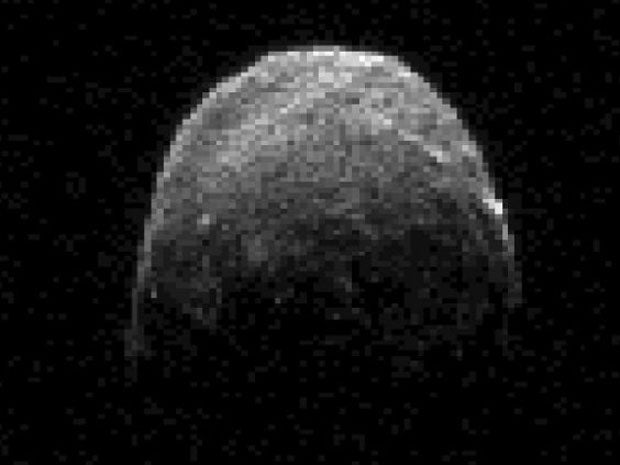
Your support helps us to tell the story
From reproductive rights to climate change to Big Tech, The Independent is on the ground when the story is developing. Whether it's investigating the financials of Elon Musk's pro-Trump PAC or producing our latest documentary, 'The A Word', which shines a light on the American women fighting for reproductive rights, we know how important it is to parse out the facts from the messaging.
At such a critical moment in US history, we need reporters on the ground. Your donation allows us to keep sending journalists to speak to both sides of the story.
The Independent is trusted by Americans across the entire political spectrum. And unlike many other quality news outlets, we choose not to lock Americans out of our reporting and analysis with paywalls. We believe quality journalism should be available to everyone, paid for by those who can afford it.
Your support makes all the difference.An asteroid which will come as close to the Earth than any other of its size in 35 years could reveal information about how our planet is formed when it speeds by today.
The 1,300ft wide space rock, 2005 YU55, is the size of an aircraft carrier and will whizz past Earth at 11.28pm UK time.
The last time a space rock this large came as close to Earth was in 1976, and such an event will not happen again until 2028.
Although the asteroid will be too faint to see without a telescope, scientists will be studying it closely to learn about its orbit and composition.
Its trajectory will also be tracked by radar using ground-based antennae in California and Puerto Rico.
Asteroids such as 2005 YU55 can provide clues about the formation of the Solar System, including the Earth.
Jay Tate, director of the Spaceguard Centre, an independent observatory and research facility near Knighton, Powys, said: "We will want to tell what the surface composition of the asteroid is.
"By learning what it is made of we can question a great deal of what we know about how the planet is formed."
The 2005 YU55 asteroid will miss the Earth by 201,700 miles - a small distance in astronomical terms, although experts say there is no danger of the object hitting the planet.
If it were to veer off course, the impact could wipe out a city the size of London or New York, while landing in the sea would cause a 70ft high tsunami.
Nasa has set up its Near Earth Object Programme, known as "Spaceguard", to co-ordinate efforts to identify and track potentially hazardous space objects.
By the end of the decade, it aims to locate at least 90% of an estimated 1,000 asteroids and comets larger than one kilometre (0.6 miles) in diameter.
Objects of this size are big enough to cause the mass extinction of most life on Earth. The asteroid believed to have wiped out the dinosaurs 65 million years ago measured seven kilometres (4.3 miles) across.
Mr Tate said spotting potential threats was vitally important. "There is a clear and present danger that we might be hit," he said.
Amateur astronomers with telescopes having an aperture at least six inches wide stand a chance of catching a glimpse of the asteroid, according to Nasa.
But Mr Tate said the weather could have a major impact on visibility.
PA
Join our commenting forum
Join thought-provoking conversations, follow other Independent readers and see their replies
Comments